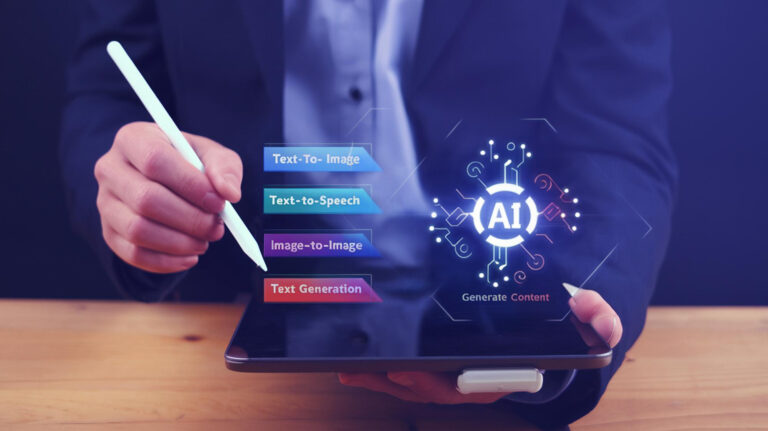From Skepticism to Strategy: The New Reality of Marketing
The business landscape is undergoing a profound transformation, and artificial intelligence (AI) is at the epicenter of this change. For small business owners, the concept of an AI Marketing Strategy may conjure images of complex, expensive, and inaccessible technology. The common sentiment is one of skepticism—a belief that AI is reserved for corporate giants with limitless budgets. However, this perception is rapidly becoming outdated. The reality is that AI has been democratized, and it is now an essential, accessible tool for small businesses aiming to remain competitive and grow.
A compelling body of evidence demonstrates that AI is not a futuristic concept but a present-day imperative. According to the BizBuySell’s Insight Report, AI adoption among small business owners has nearly doubled in a short 18-month period, surging from 26% in Q2 2023 to 51% by Q4 2024. This shift signifies a fundamental change in how small and mid-sized businesses (SMBs) operate. Marketing is at the forefront of this movement, with over 75% of surveyed owners reporting that they use AI tools for marketing functions, making it the most common application of the technology.
The motivations behind this rapid adoption are rooted in tangible, measurable results. Small businesses are not simply experimenting with a new trend; they are seeing a clear return on their investment. Approximately 85% of SMBs that have adopted AI expect to see a clear ROI, and for every $1 invested in generative AI, the average return is 3.7x. These figures are a powerful testament to the value of AI in a resource-constrained environment. This guide will demystify the process, providing a clear, four-phase roadmap for leveraging AI to enhance efficiency, reduce costs, and deepen customer connection, all without requiring a massive budget or deep technical expertise.
The Strategic Imperative: Why AI is No Longer Optional for SMBs
AI’s role in small business marketing extends far beyond simple automation; it acts as a strategic engine that fundamentally alters how businesses operate. The core value of AI for SMBs can be broken down into three key areas: the efficiency revolution, competitive advantage through personalization, and a data-driven approach to strategy. These benefits address the primary constraints faced by small businesses, a lack of time, limited resources, and intense competition.
The Efficiency Revolution: AI as a “Force Multiplier”
For any small business, time is the most valuable and scarcest resource. AI serves as a “force multiplier,” enabling small teams to accomplish tasks that would otherwise require a significantly larger workforce. A staggering 97% of small businesses report that AI tools reduce the time they spend on marketing tasks. This is not a marginal improvement; it is a fundamental shift in operational capacity. Early adopters of generative AI have already reported an average productivity improvement of 22.6%, and some AI-driven models can reduce the time required to analyze data and generate insights by as much as 90%.
This newfound efficiency is about more than just speeding up processes. By automating repetitive and time-consuming tasks like data entry, scheduling, content drafting, and resume screening, AI liberates employees to focus on more complex, creative, and strategic work. This ability to reallocate human capital is a significant advantage. Instead of needing to hire additional staff, a cost that 95% of businesses agree AI reduces the need for, a small business can empower its existing team to take on higher-value responsibilities. This shift in focus from mundane administrative work to strategic innovation is a key driver of AI’s economic impact and a crucial factor in securing a long-term competitive edge.
Competitive Advantage Through Personalization
In an increasingly crowded marketplace, personalization is the key to building customer loyalty and driving conversions. AI makes it possible to deliver deeply tailored experiences at a scale that was previously unattainable for small businesses. While global corporations like Starbucks and Amazon use massive, proprietary AI engines to power their recommendation systems, the same principles are now available to SMBs through affordable, off-the-shelf tools.
This democratization of personalization addresses a critical paradox in the research. One study notes that the capital investment and expertise required for custom AI solutions have historically made them “uneconomical for small and medium-sized enterprises”. However, this is no longer the case. The resolution lies in accessible platforms that use AI to analyze customer data and deliver targeted messaging. For example, AI-powered chatbots like Tidio can handle multiple customer conversations simultaneously, providing personalized service and generating leads around the clock. Similarly, email marketing tools can use AI to craft personalized campaigns by adjusting subject lines and body copy based on user behavior and preferences. By achieving this “right-sized” level of personalization, a small business can build meaningful connections and foster a level of customer loyalty that was once only possible for large brands with enormous resources.
The Data-Driven Advantage: Insights Beyond Human Capacity
Traditionally, marketing decisions in small businesses have often been based on intuition, anecdotal feedback, or backward-looking reports. AI changes this paradigm by providing real-time, forward-looking insights derived from vast datasets that are “beyond human capacity” to analyze. Predictive analytics can anticipate market trends and consumer behavior, enabling businesses to adjust their strategies proactively and stay ahead of the competition.
This shift from a reactive to a predictive strategy is a significant development. AI allows a small business to move past simply responding to problems and start anticipating customer needs before they are even articulated. By analyzing browsing patterns, search intent, and social sentiment, AI can predict what information a specific customer segment will need. This allows for the creation of targeted content that builds trust and delivers value much earlier in the customer journey, fundamentally changing the relationship between a business and its audience. Platforms with “AI-powered feedback loops” ensure that every campaign feeds performance data back into the system, enabling continuous learning and faster iterations to fix underperforming elements and double down on what works.
The Foundational Blueprint: A Four-Phase AI Marketing Strategy
Embarking on an AI marketing strategy can feel overwhelming. The key to a successful adoption is not to jump into every available tool but to follow a structured, phased approach that starts small, proves value, and builds confidence.
Phase 1: Define Your Goals and Identify a Specific Problem
The single most important step in an AI marketing strategy is to resist the urge to do everything at once. Instead, identify one specific, recurring problem that AI can solve. This approach mitigates risk, proves the value of the technology quickly, and builds the confidence needed for future, more complex implementations. The research indicates that while many leaders find it challenging to prove ROI on AI initiatives, successful small businesses often begin with a single, well-defined problem.
A perfect example is the family-owned bakery that was struggling with inventory management and food waste. Instead of overhauling its entire operation, the owner implemented a simple AI forecasting system to predict daily demand for its top 10 products. The result was immediate and tangible: food waste decreased from 18% to under 4%, and profit margins increased by 22%. This focused application illustrates that the success of an AI strategy is not determined by the complexity of the technology but by the clarity of the problem it is intended to solve.
Phase 2: Choose the Right Tools for the Job
Once a specific problem has been identified, the next step is to select the right tool. The AI landscape is vast, but it is now populated with specialized, affordable, and user-friendly platforms designed for small businesses. The following table provides a curated guide to vetted, accessible tools across common marketing functions.
AI Marketing Tooling Guide for Small Businesses
| Category | Example Tools | Key Features | Affordability |
| Content Creation | Jasper, Copy.ai, Writer | Generates high-quality blog posts, social media content, and ad copy. | Plans start at approximately $39/month. |
| SEO & Content Optimization | Surfer SEO, Frase.io | Analyzes competitor content, provides keyword recommendations, and ensures content is optimized for search engines. | Surfer SEO plans start at $79/month when billed annually. |
| Customer Service | Tidio, HubSpot | Powers live chat and AI-driven chatbots to handle customer inquiries, reduce wait times, and generate leads. | Tidio has a free plan; paid plans start at approximately $24/month. |
| Ad Targeting | Adcreative.ai, Albert.ai | Generates and optimizes digital ads by targeting customers with the highest likelihood of conversion. | Adcreative.ai has various plans; Albert.ai is a more advanced, enterprise-level tool. |
| Social Media | Sprout Social, Loomly, Buffer | Automates social media scheduling, analyzes performance, and can generate post captions. | Pricing varies; Sprout Social has a free plan. |
Phase 3: Implement, Integrate, and Train Your Team
The successful implementation of AI is not a one-person job; it requires a collaborative approach that involves the entire team. A phased rollout is essential to ensure a smooth transition. Training is a crucial component of this phase. The research shows that a significant number of employees, 75%, are concerned that AI will make certain jobs obsolete, and 46% of leaders identify skills gaps as a major barrier to adoption. These concerns represent both a psychological and a practical obstacle that must be addressed proactively.
The solution is to position AI not as a replacement, but as a co-pilot. By training staff on how to use AI tools ethically and effectively, a business can empower its workforce and foster a new skillset that is highly in-demand. This approach ensures employee buy-in and frames AI as a tool that enhances human creativity and strategic thinking, rather than a threat to job security. The most valuable outcome of AI adoption is not the automation itself, but the partnership it enables between human expertise and machine efficiency.
Phase 4: Analyze, Optimize, and Scale
The final phase of the strategy involves treating AI implementation as a continuous cycle of analysis and improvement. AI tools provide “AI-powered feedback loops” that allow businesses to track performance in real-time, identify hidden patterns, and refine their strategy. This capability allows teams to “iterate faster, fix what’s underperforming, and double down on what works” without having to wait for lengthy reporting cycles.
This dynamic process transforms a static marketing plan into a living, responsive system. By leveraging AI to analyze performance data, a business can gain a deeper understanding of what is resonating with its audience and what needs to be adjusted. This data-driven optimization enables a small business to make smarter decisions about everything from ad spend and content topics to customer service and product recommendations, ensuring that every effort is as efficient and effective as possible.
AI in Action: Core Applications for Your Small Business
AI is revolutionizing virtually every marketing function. For small businesses, the following applications offer the most immediate and tangible benefits.
Content Creation and SEO
Content is the lifeblood of digital marketing, and AI has become an indispensable tool for every stage of its lifecycle, from ideation to optimization. Generative AI can draft first versions of blog posts, social media captions, video scripts, and email copies in minutes, saving countless hours of human effort. A survey found that 55% of marketers now rely on AI for text-based content creation, and 42% use AI tools daily or weekly for this purpose.
For search engine optimization (SEO), AI provides a powerful advantage. Tools can assist with keyword research, analyze competitor content to identify gaps, and optimize content for readability and search intent. The use of AI can also speed up the research process, allowing marketers to quickly gather relevant information and statistics to back up their claims. The evidence of its effectiveness is compelling. JPMorgan Chase, for example, conducted a trial of a generative AI tool to write short marketing copy and found that the AI-written versions “often outperformed the human-written copy” in terms of click-through rates and email open rates.
Personalized Customer Experience
The modern consumer expects a personalized, seamless experience. AI is the engine that powers this expectation by delivering tailored interactions that build loyalty and trust. AI-powered chatbots can handle multiple conversations at once, significantly reducing customer wait times and providing 24/7 support. These tools have become so effective that over 92% of small businesses using AI for customer service report faster turnaround times.
A chatbot platform can reduce churn and improve customer loyalty by providing quick, accurate responses and engaging users with relevant offers. This level of responsiveness makes personalization accessible for any business size, helping to bridge the gap between a small team and a large customer base. By analyzing user behavior and preferences, these tools deliver hyper-personalized content, from website recommendations to timely offers, ensuring that every interaction feels unique and valuable.
Smarter Ad Targeting and Optimization
Advertising is a major investment for small businesses, and a limited budget necessitates maximizing every dollar. AI provides a solution by enabling smarter ad targeting and optimization that focuses on return on investment (ROI). A notable 47% of marketers in small businesses now rely on AI for ad targeting, a practice that has been shown to lead to higher conversion rates. AI-powered tools can analyze vast amounts of data, including browsing patterns and purchase history, to identify customers with the highest likelihood of conversion.
Volkswagen provides an excellent example of this principle. The company used a predictive model to identify high-intent consumers, allowing it to focus its ad spend on the audience that mattered most. A small business can achieve similar results on a smaller scale by using tools like Adcreative.ai, which can generate and optimize digital ads in minutes by using inputs like target audience, brand description, and desired format. This ability to focus ad spend with precision and data-driven insight is a strategic requirement for staying competitive.
Real-World Success Stories: Learning from Leaders and Local Heroes
While corporate giants like Amazon and Starbucks provide impressive examples of AI’s potential, the most instructive stories for small businesses come from relatable, “local hero” triumphs. These case studies prove that AI’s value is not in its complexity but in its ability to solve specific, high-impact problems.
The Small Business Triumph
One particularly compelling example is the story of Sweet Creations, a family-owned bakery. The bakery’s main challenge was a significant amount of food waste, which was eating into its profit margins. By implementing a simple AI forecasting system that analyzed two years of sales data, local event calendars, and weather patterns, the bakery was able to predict daily demand with remarkable accuracy. Within six months, food waste plummeted by over 75%, and profit margins increased by 22%. This success story highlights how a focused, simple AI application can deliver an immediate and dramatic return on investment.
Another powerful example is Hamilton Legal Services, a small law firm that was overwhelmed by the manual tasks of document review and generation. The firm implemented an AI-powered system that could review client questionnaires, generate first drafts of legal documents, and flag inconsistencies. The result was transformative: document preparation time decreased by 70%, and the attorneys were able to handle twice as many clients without hiring additional staff. This story demonstrates how AI can be a tool for scaling operations and increasing revenue without the need for a larger team, a key consideration for many small businesses.
Overcoming Obstacles: Addressing Key Challenges and Concerns
Despite the clear benefits, the path to AI adoption is not without its challenges. Addressing these concerns proactively is essential for a successful implementation.
Overcoming Cost & Proving ROI
A major hurdle for many businesses is the difficulty of proving a clear ROI on AI initiatives, a concern cited by 66% of leaders. This problem is a direct result of an unfocused implementation strategy. The solution is to adhere to the “start small” principle, selecting a single problem with a clear, measurable outcome. For instance, a measurable outcome could be a reduction in ad spend, an increase in leads from a chatbot, or a decrease in a specific, recurring cost. By focusing on a single, high-impact problem, a small business can quickly and confidently prove the value of its investment, building the internal support needed to scale its AI efforts.
The Skills Gap & The Human-AI Partnership
The fear that AI will make jobs obsolete is a legitimate concern, shared by 75% of employees. This anxiety, combined with a skills gap, can become a significant barrier to adoption. The solution is to reframe the narrative from one of replacement to one of partnership. AI is not a job killer; it is a task automator that frees up human talent to focus on more complex, creative, and strategic work. AI literacy is now a highly demanded skill in the job market, and investing in training for existing employees transforms AI from a threat into a professional development opportunity. The future of marketing is not human versus machine; it is a symbiotic partnership between human creativity and AI-driven efficiency.
The Ethics and Data Privacy Challenge
Implementing AI, particularly in marketing, brings up critical concerns about data privacy, security, and governance, which are cited as top concerns by 41% of professionals. The ethical use of customer data is paramount. The solution for small businesses is to vet their tools carefully and partner with reputable platforms that have strict security protocols and a transparent approach to data management. While AI provides the insights, the human business owner is ultimately responsible for the ethical use and safeguarding of customer information. By prioritizing security and transparency, a small business can build trust and maintain a strong reputation in the digital landscape.
The Future is Now: Your Next Step
AI marketing is no longer an abstract concept or a luxury reserved for the Fortune 500. It is a powerful, accessible reality for small businesses seeking to save time, reduce costs, and build a competitive edge through personalization and data-driven strategy. The barriers to entry cost, complexity, and skills have been dramatically lowered by a new generation of affordable and user-friendly tools. The real risk for a small business is no longer in adopting AI, but in waiting too long and falling behind the accelerating pace of the market.
The time for a first step is now. The most effective way to begin is not with a massive, all-encompassing strategy, but with a focused, single-point solution. Identify one recurring bottleneck in your marketing workflow, choose a single, accessible AI tool to address it, and commit to the process. Whether it is automating social media scheduling, using a chatbot to manage customer inquiries, or leveraging a content tool to streamline your blog production, this first step will provide the immediate, tangible ROI needed to build confidence and scale your AI efforts for the future. The AI-powered future of marketing is not coming; it is already here.












